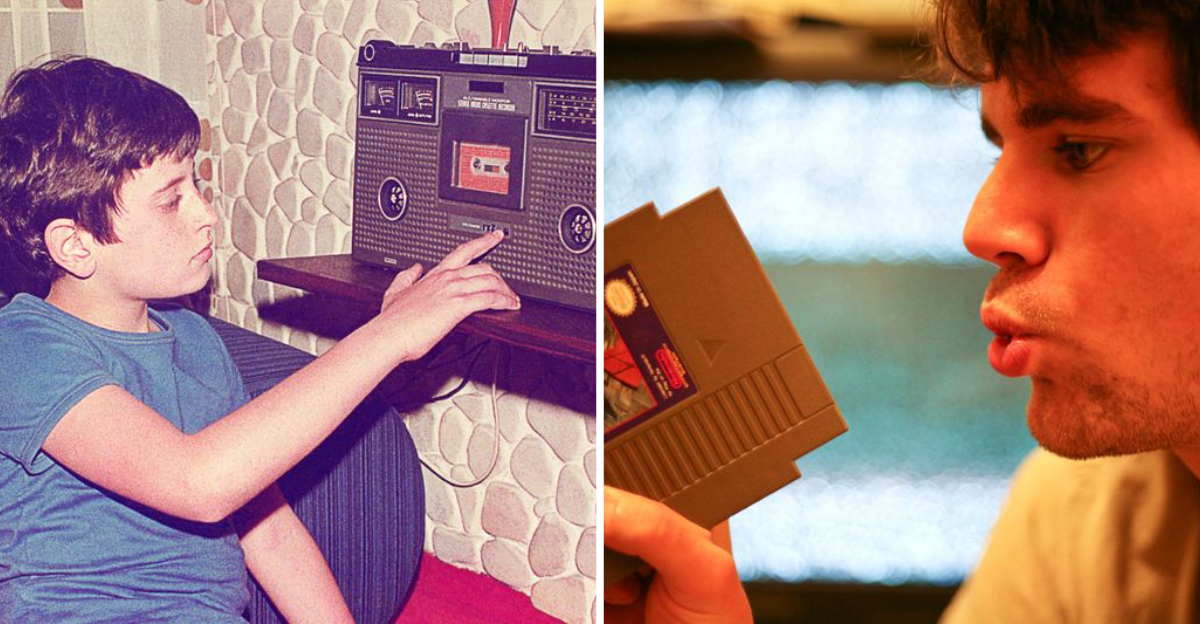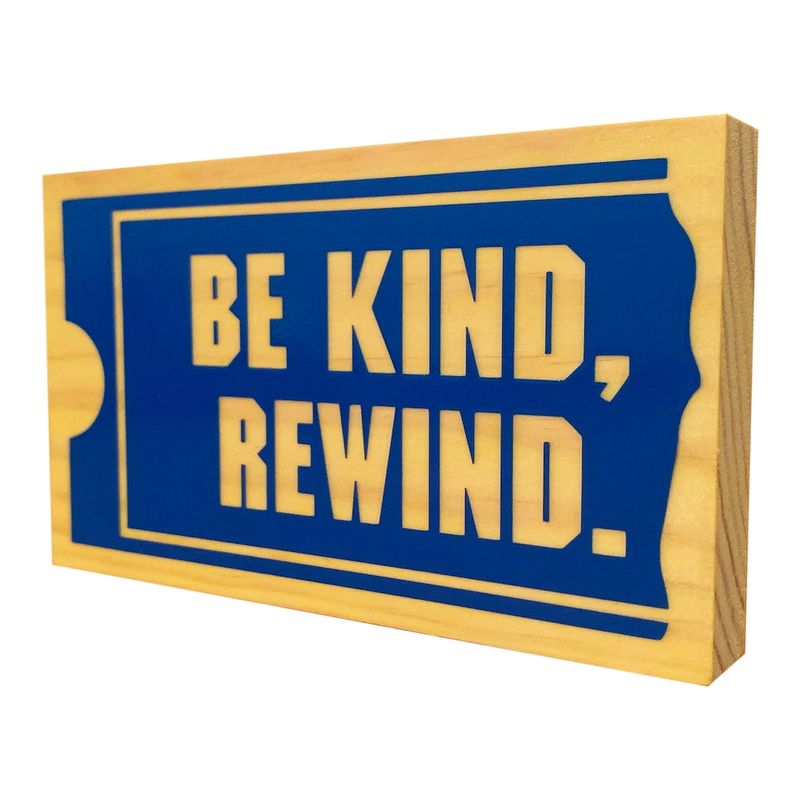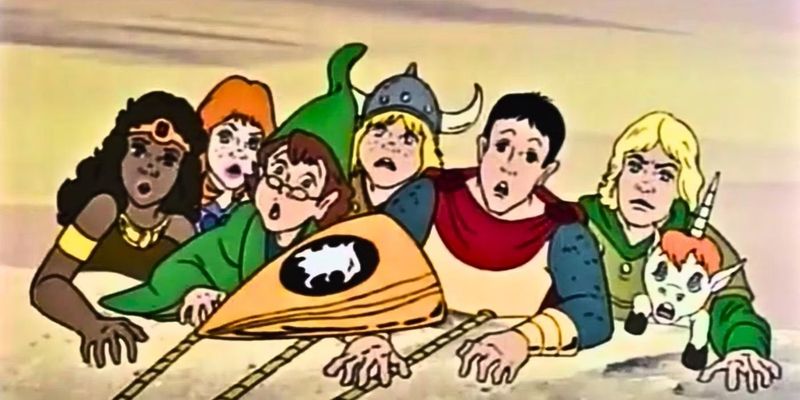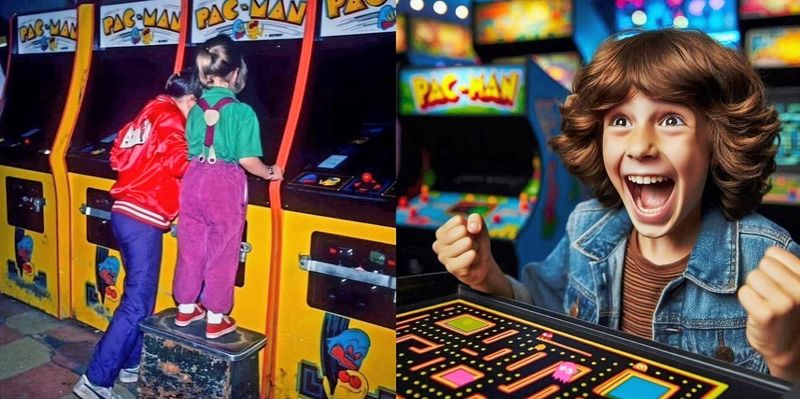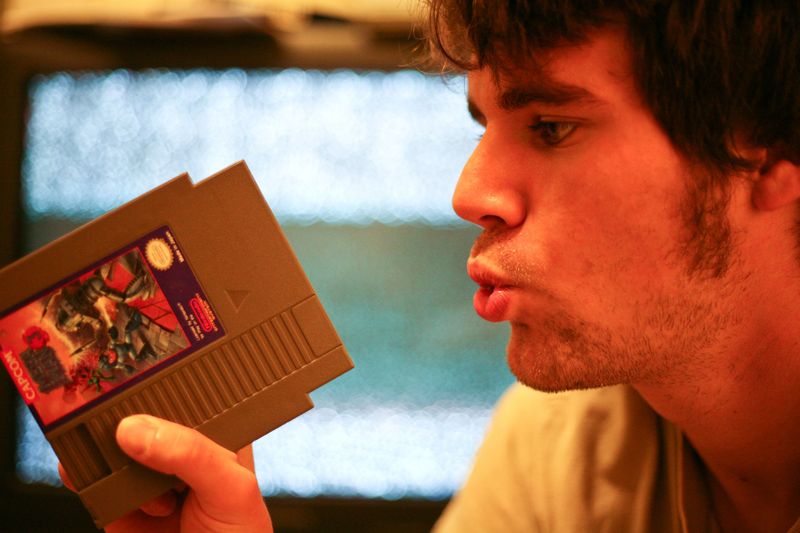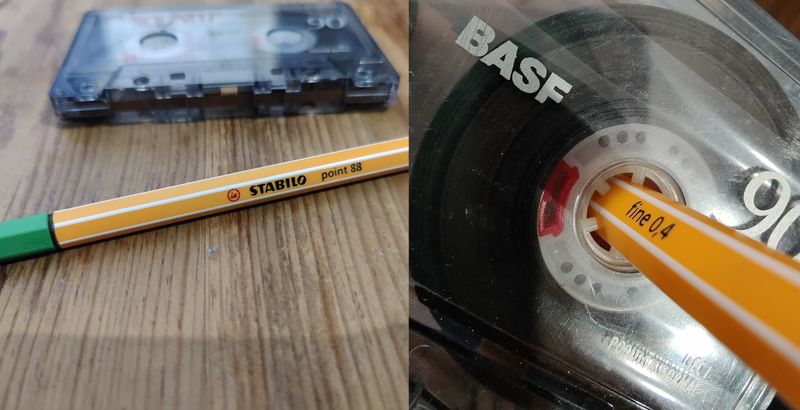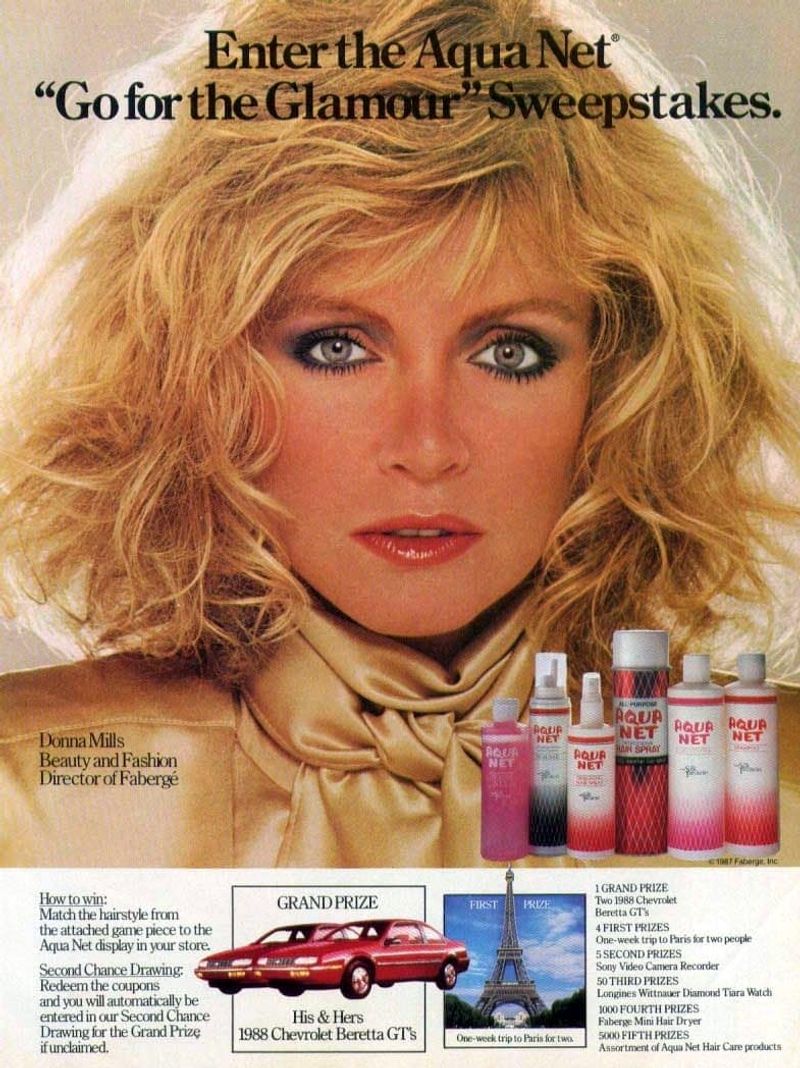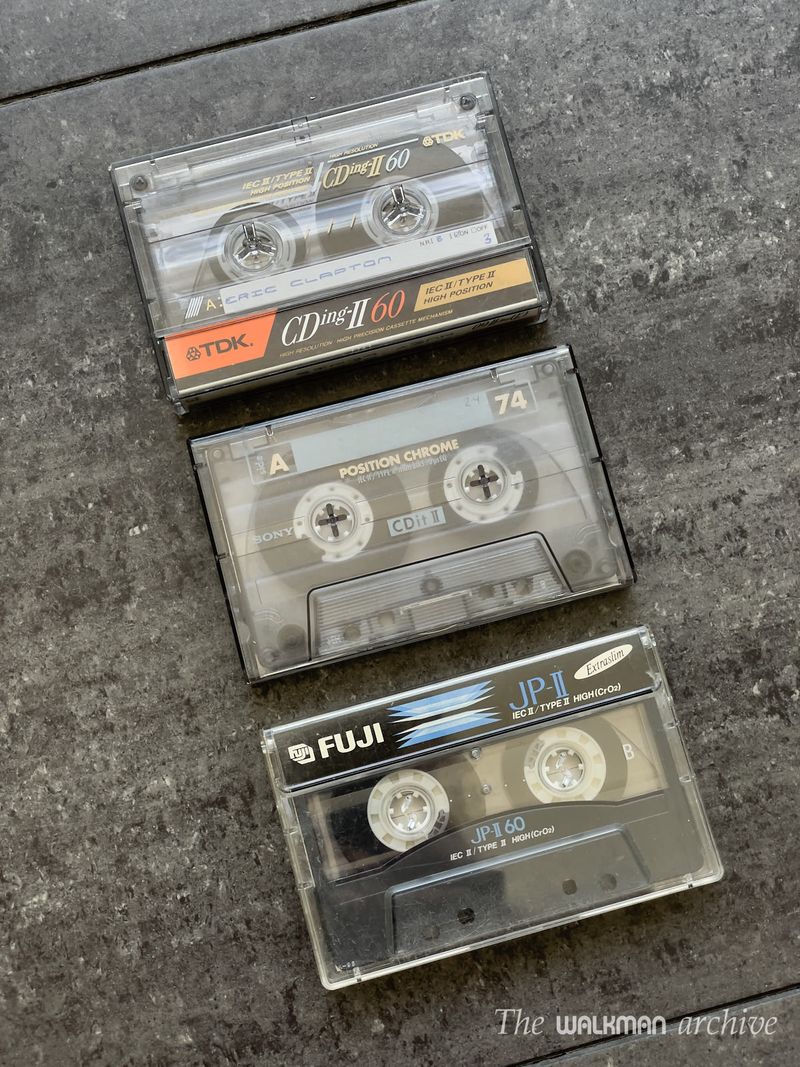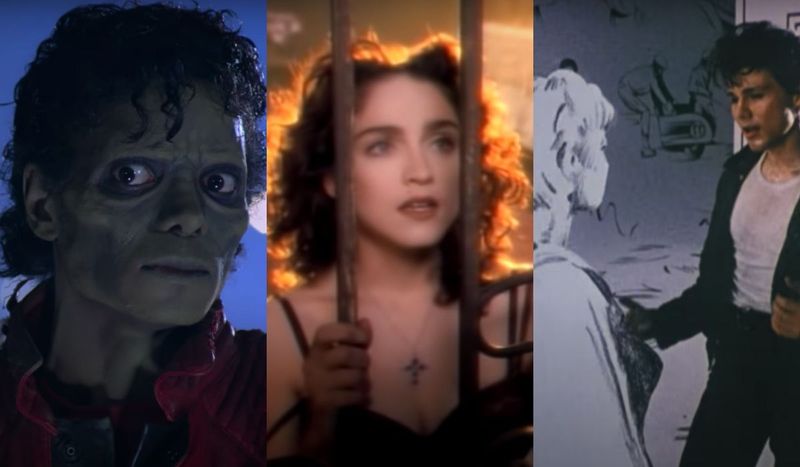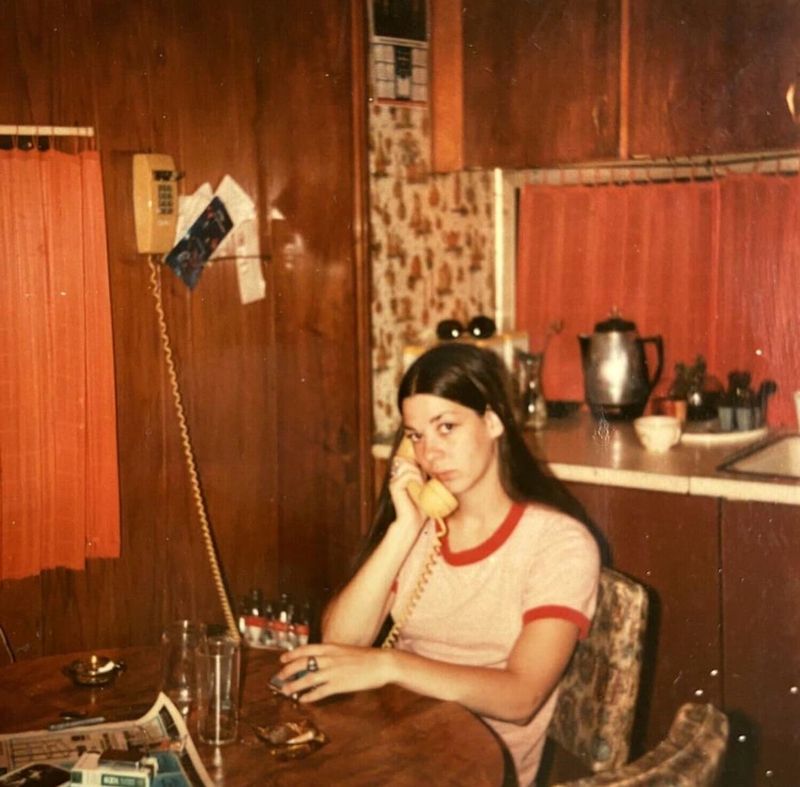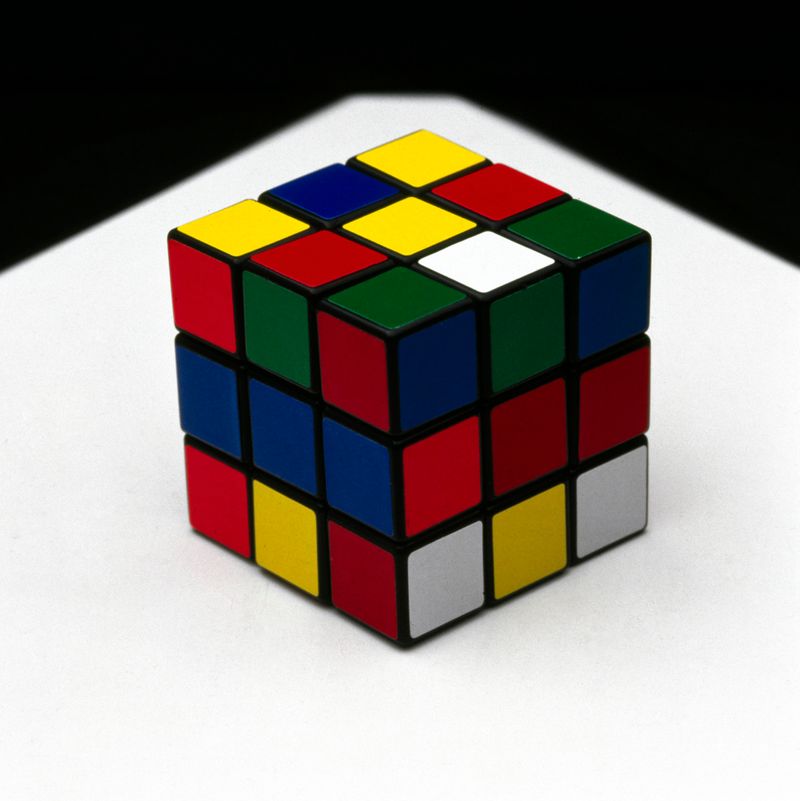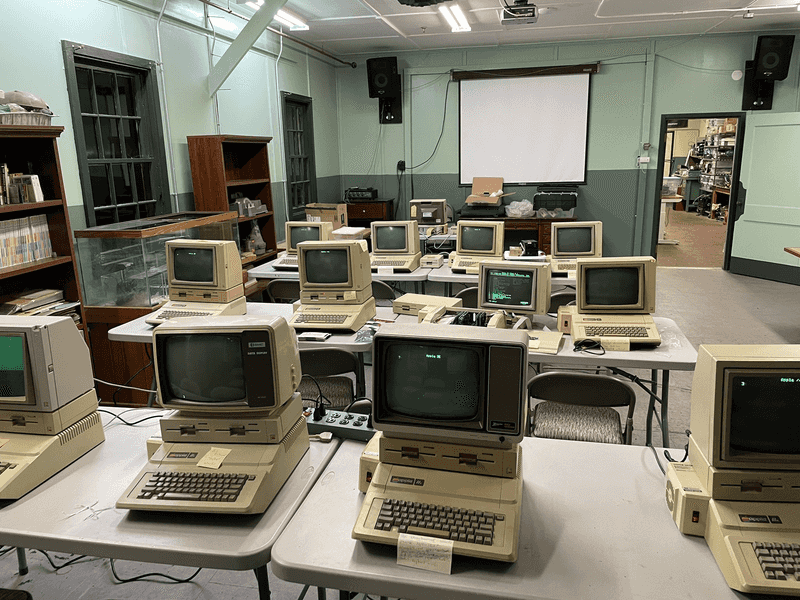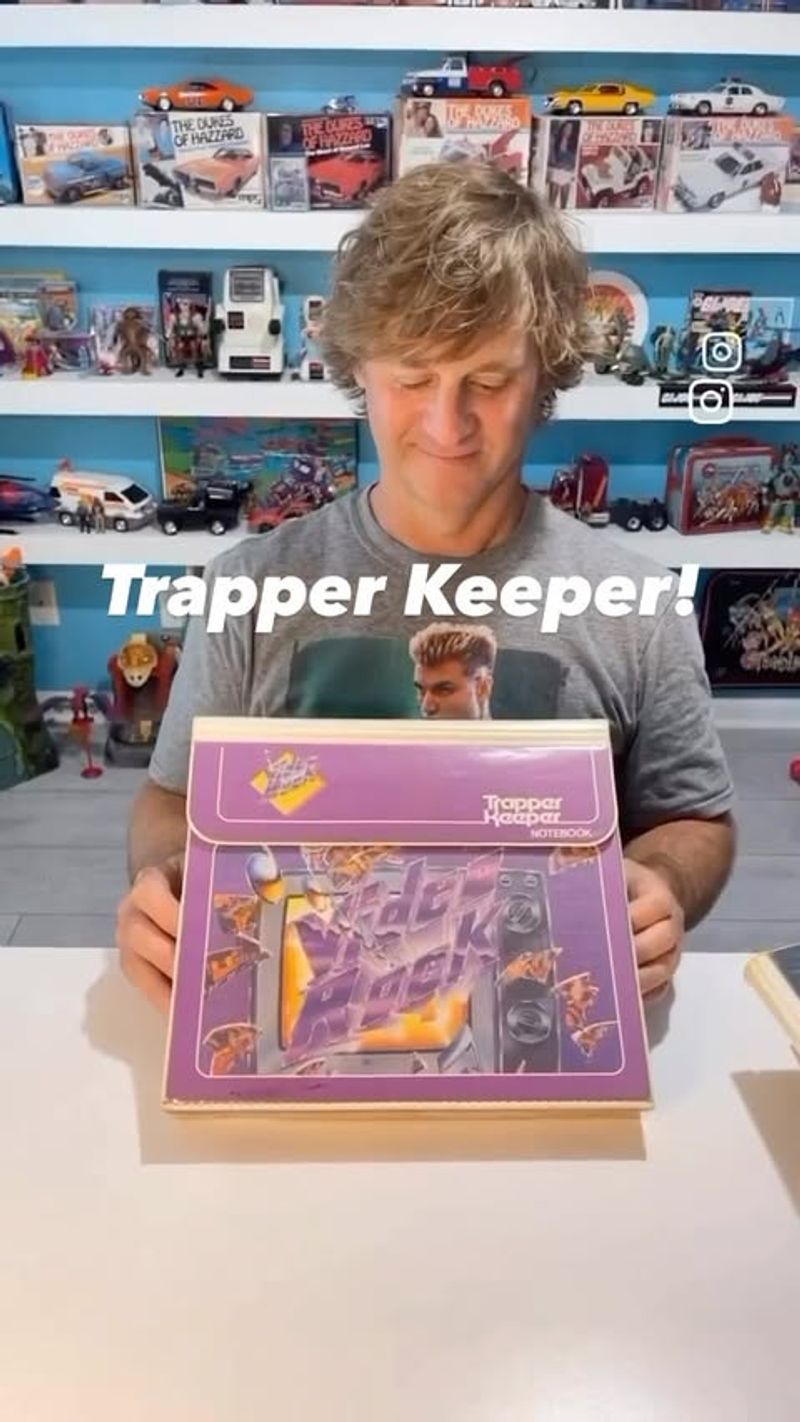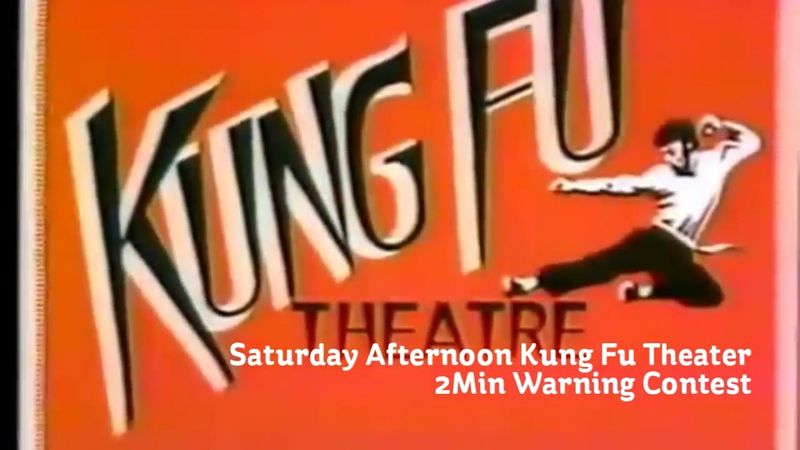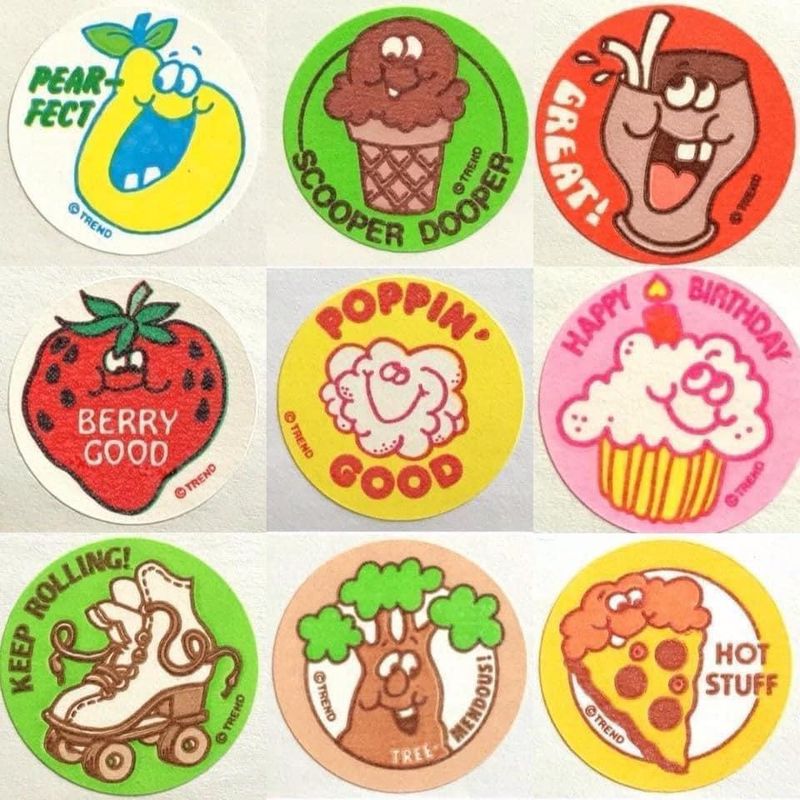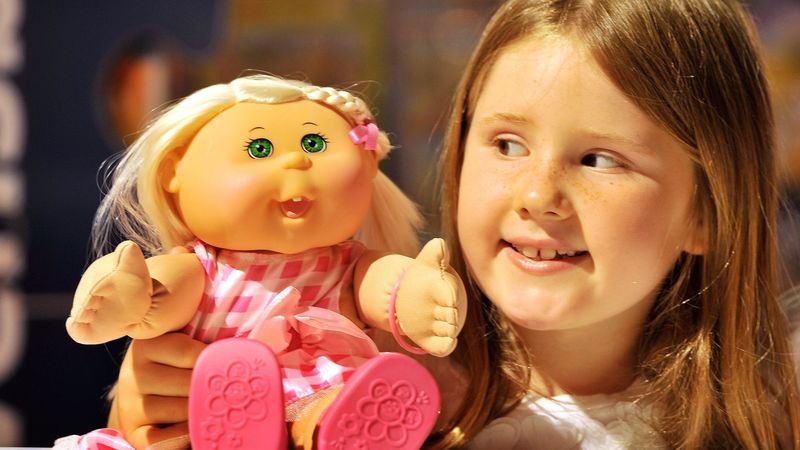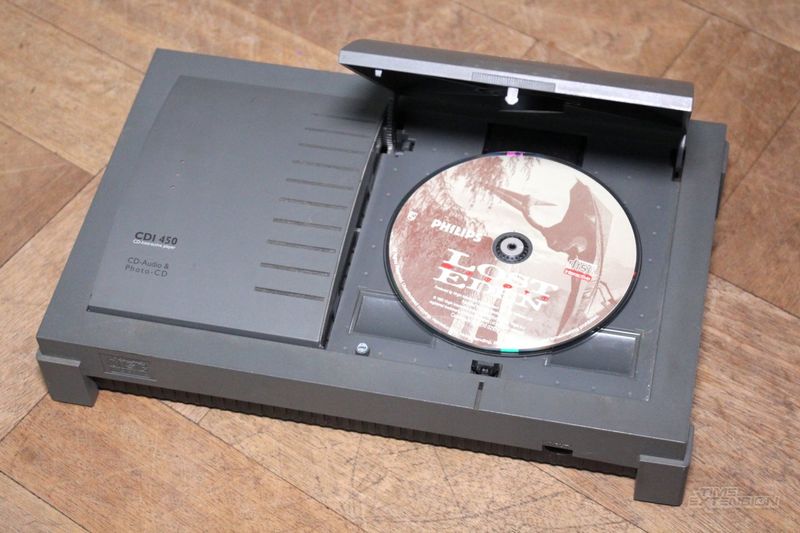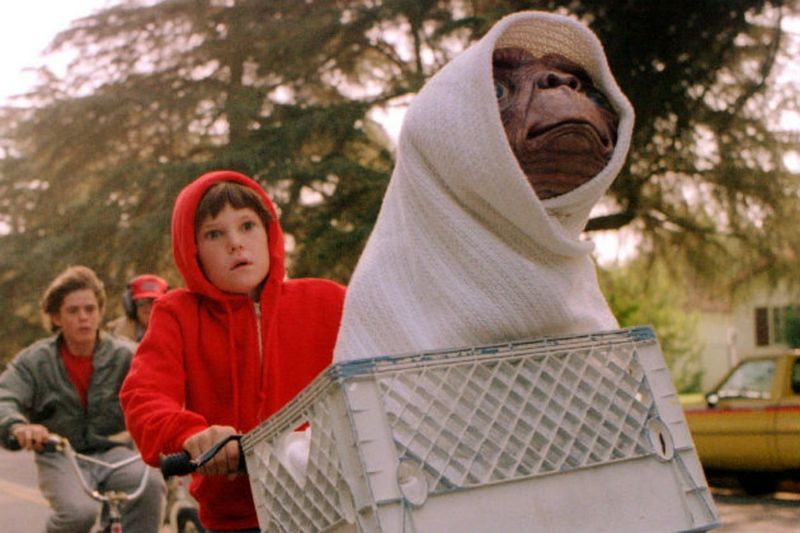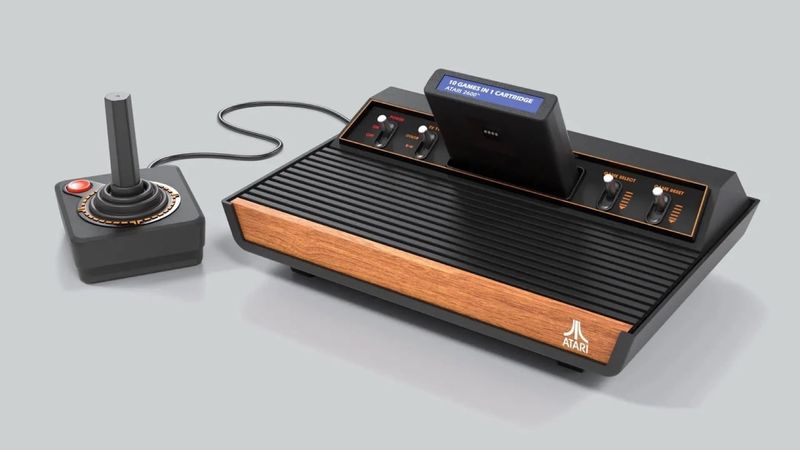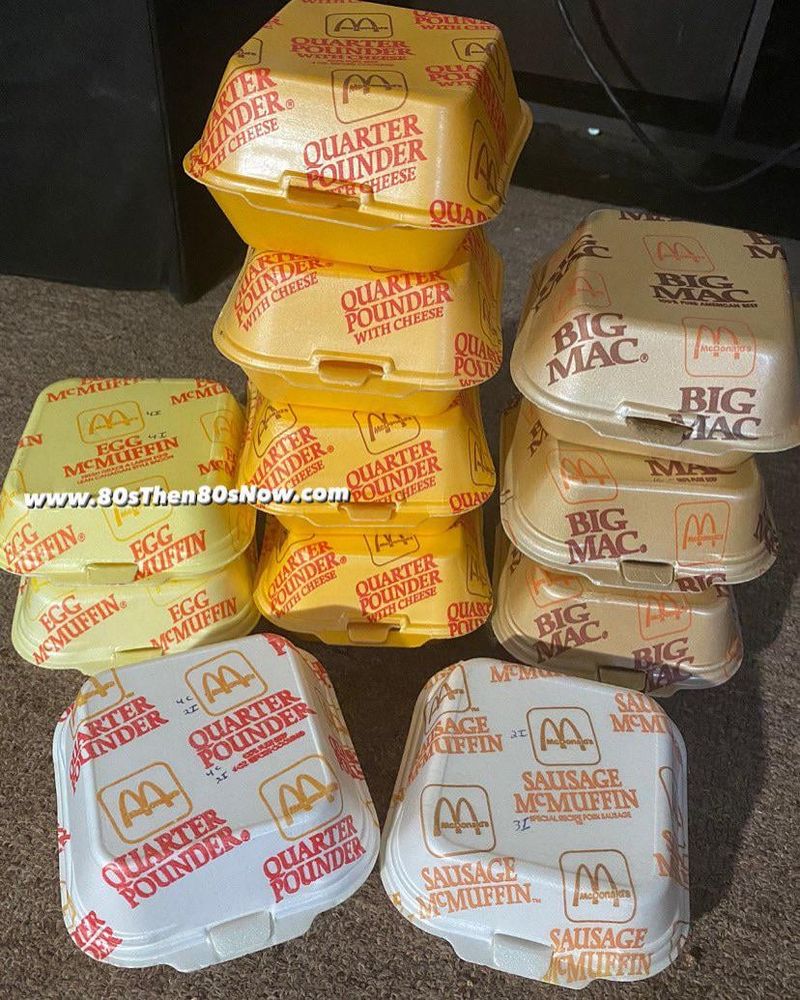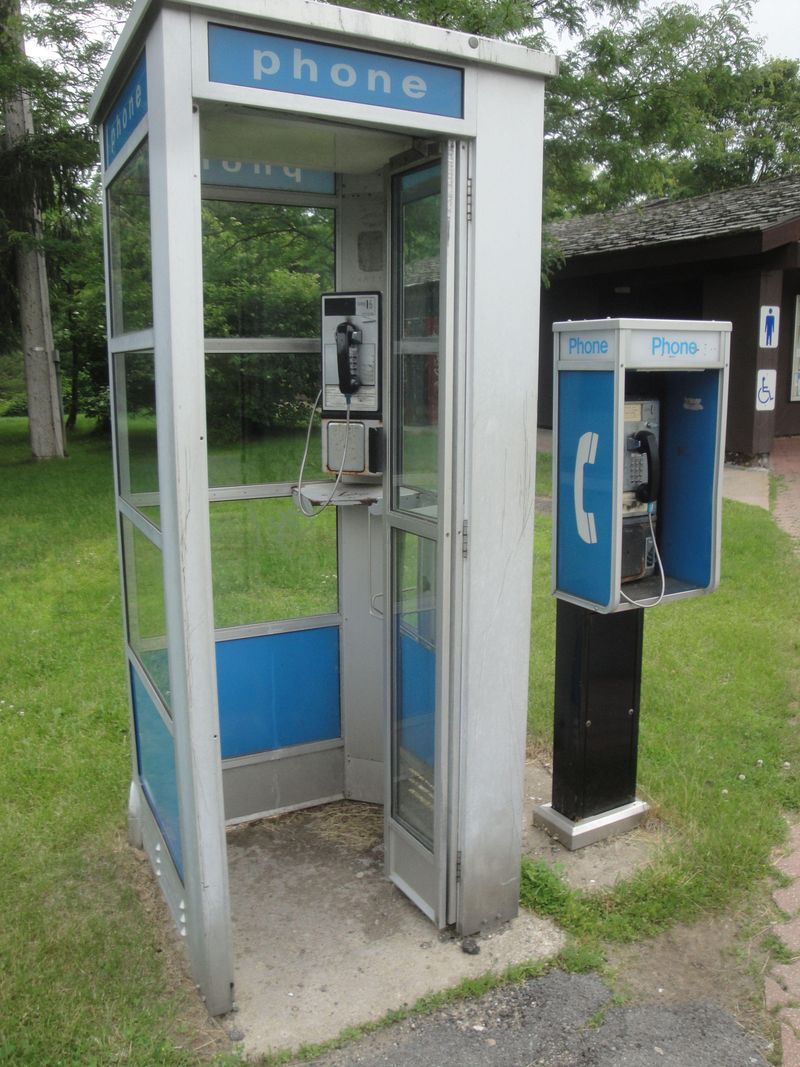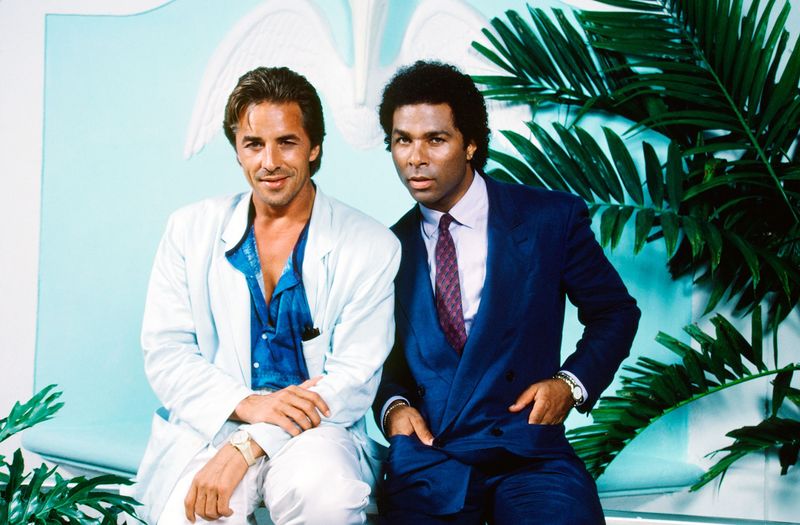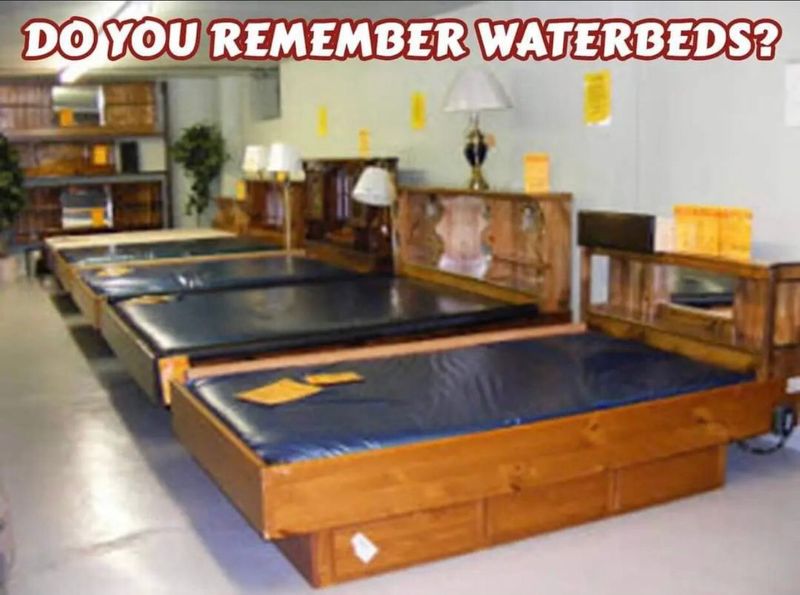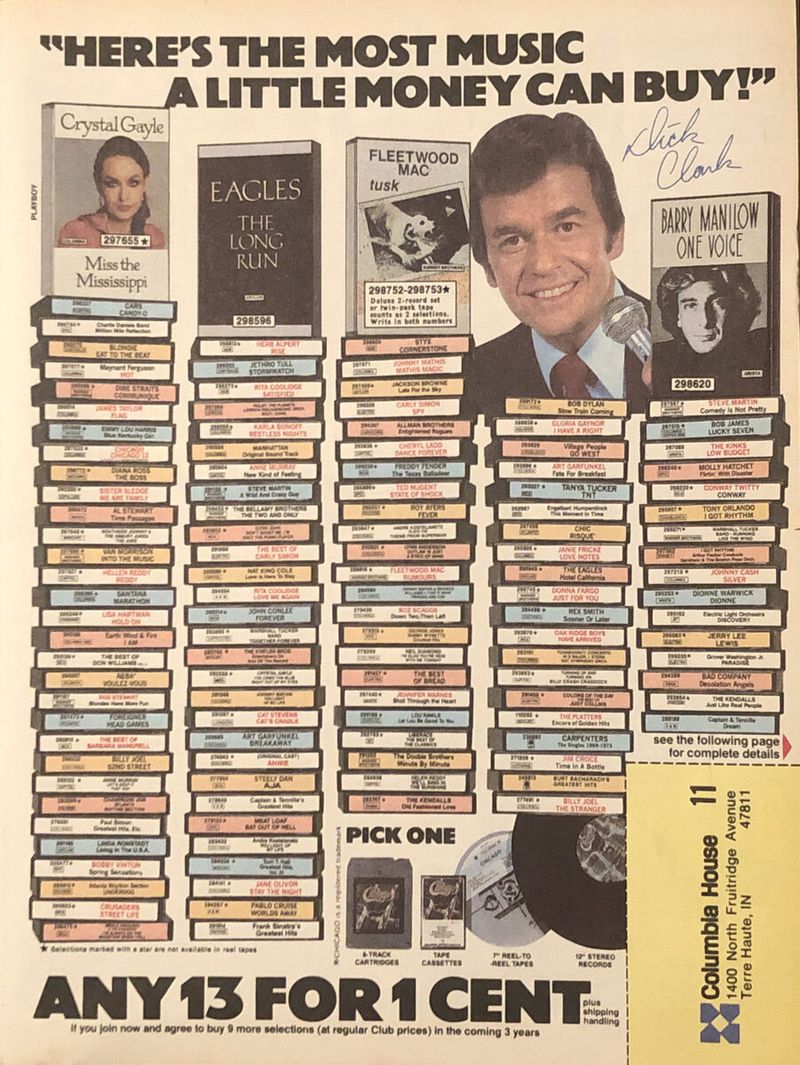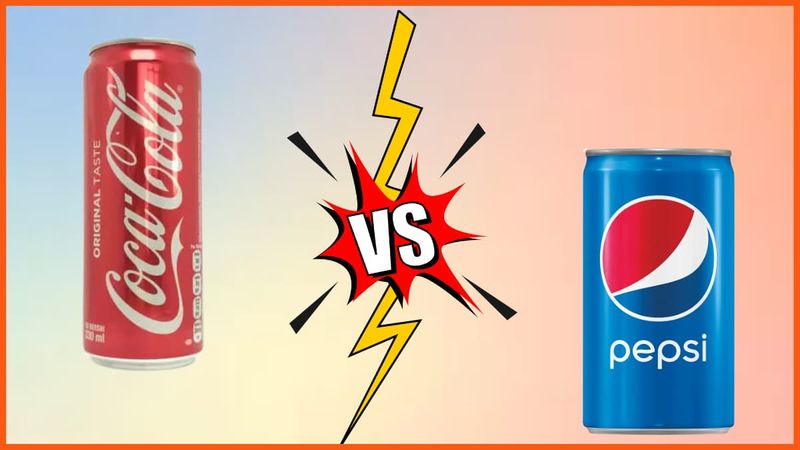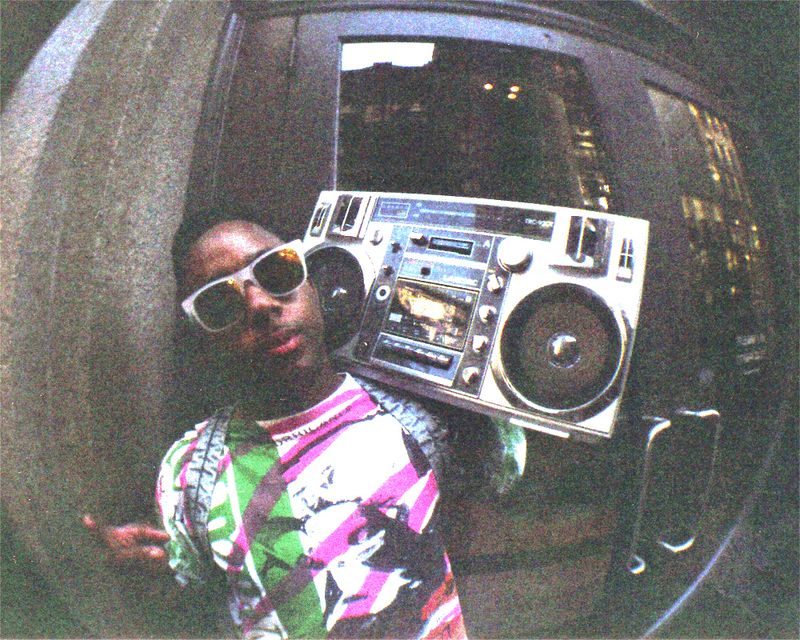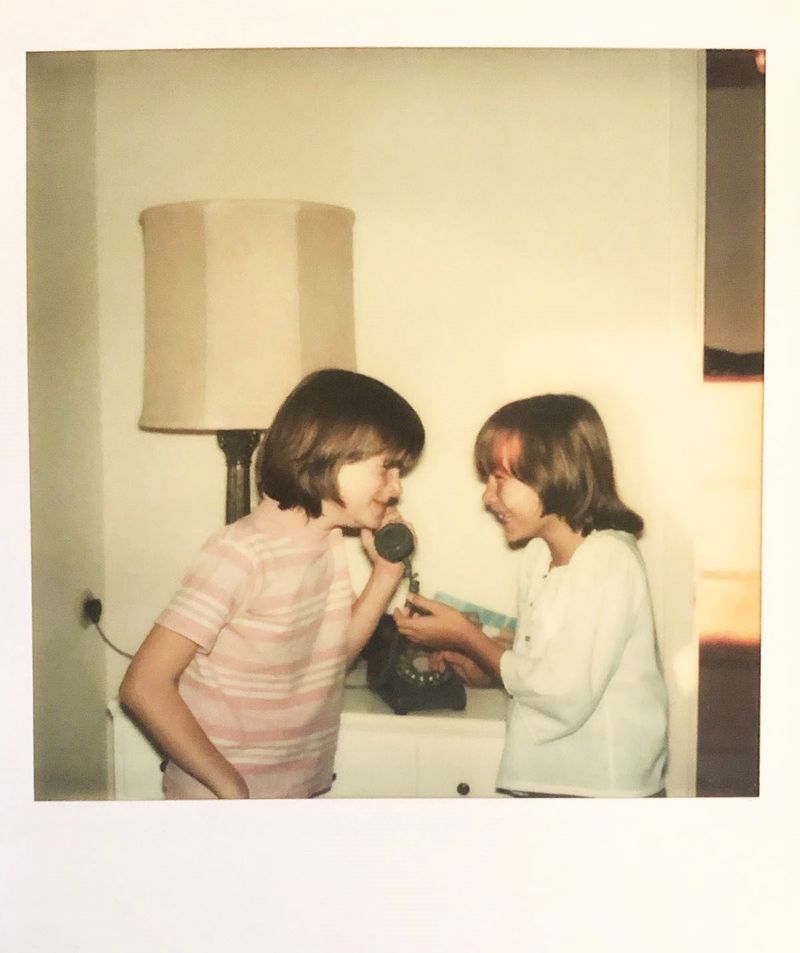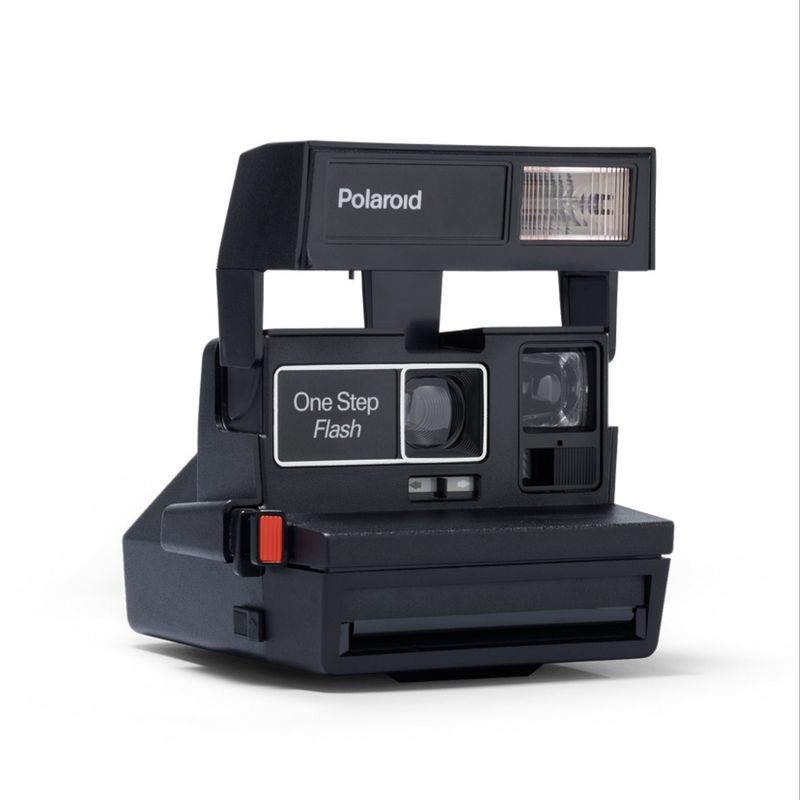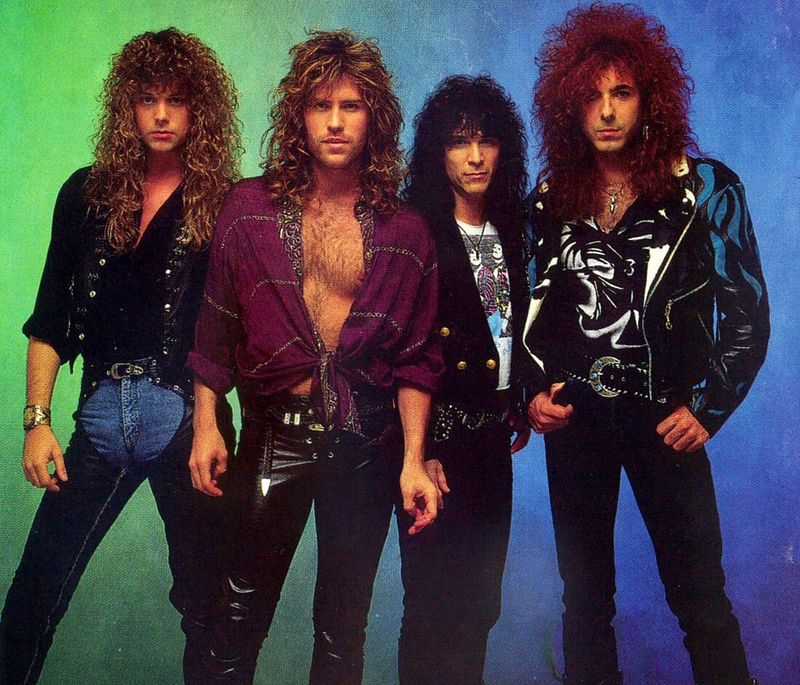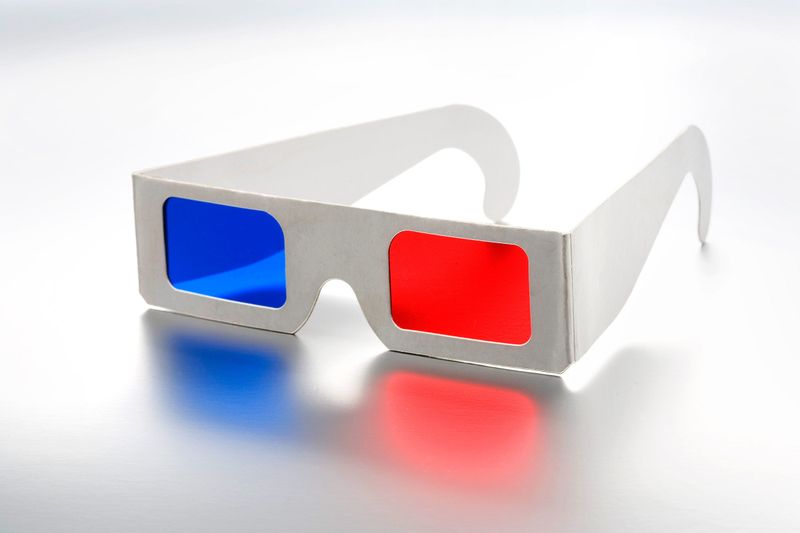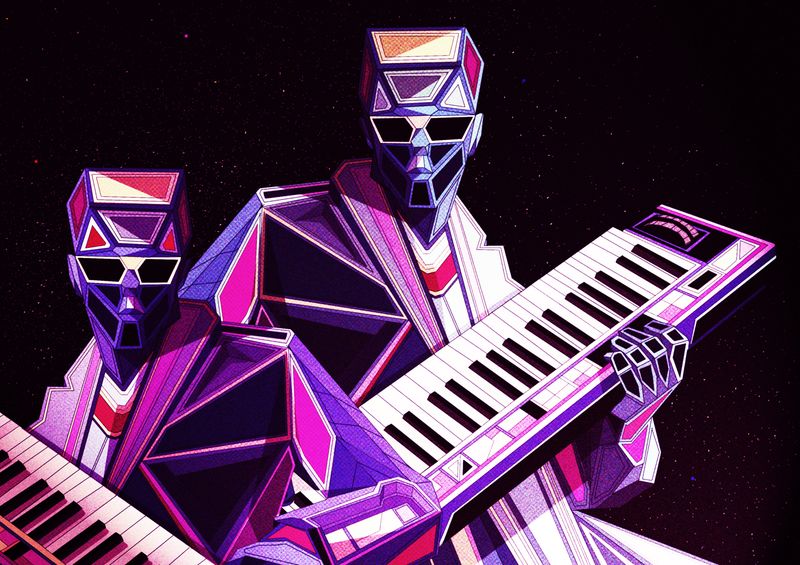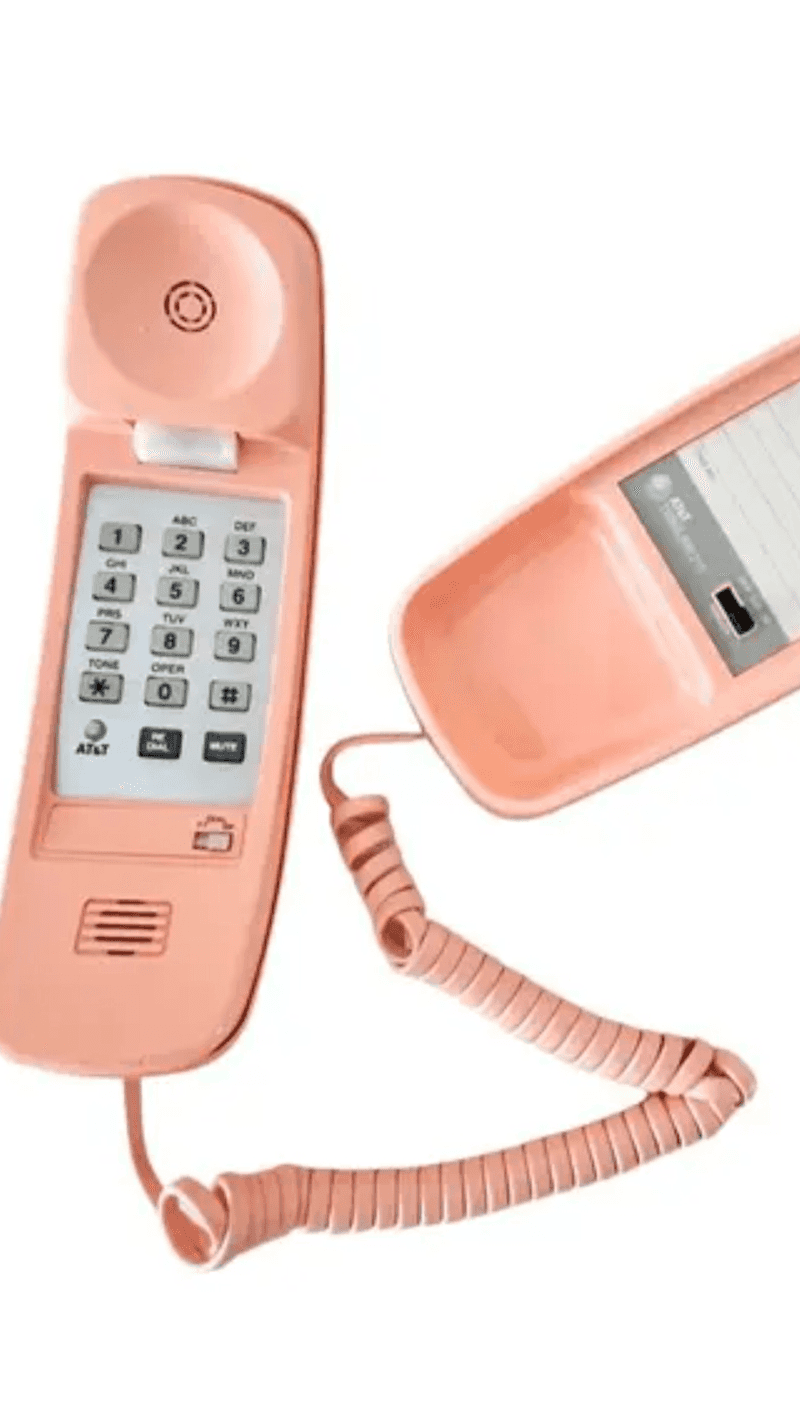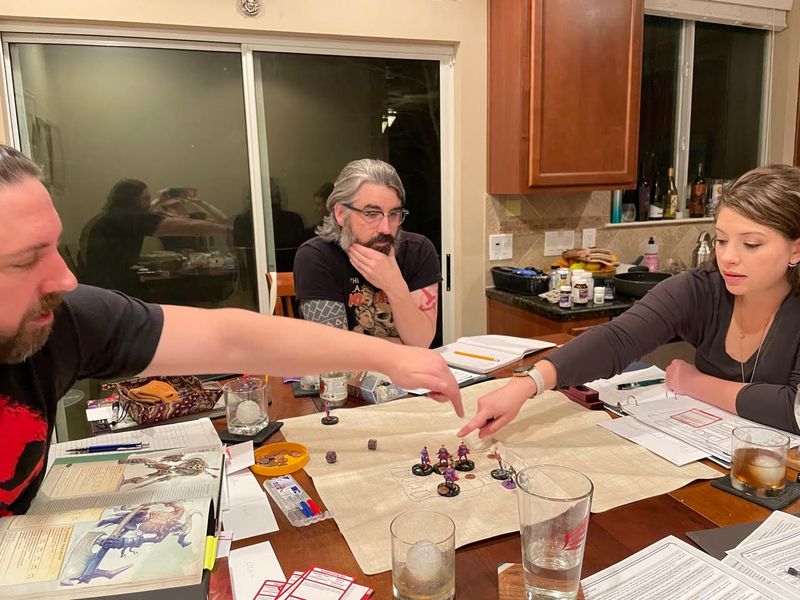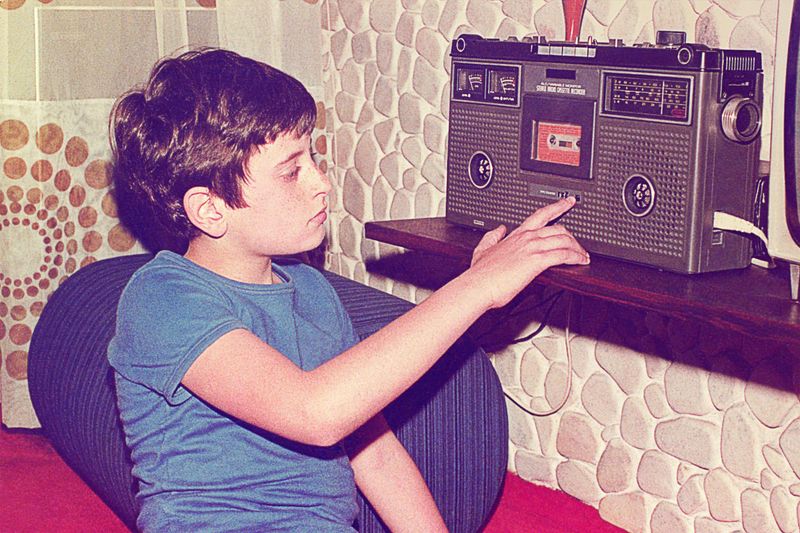The 1980s were a time of vibrant culture, iconic technology, and memorable fashion that shaped an entire generation’s childhood.
Those who grew up during this era fondly recall the quirky gadgets, unique trends, and unforgettable experiences that defined their youth. However, for kids today, many of these 80s phenomena might seem completely foreign.
Let’s take a nostalgic journey back in time to explore 35 things from the 80s that kids today probably wouldn’t understand.
VHS Tapes and the “Be Kind, Rewind” Rule
Once upon a time, Friday nights meant visiting a local video rental store, choosing a VHS tape, and ensuring it was rewound before returning. The “Be Kind, Rewind” rule was more than etiquette; it was a cultural norm that reflected the communal nature of movie-watching.
Rewinding tapes became a shared responsibility, and video players often had built-in reminders to rewind. It was an analog world, where physical media required care and attention. Returning a non-rewound tape sometimes incurred a small fee. The tactile nature of handling VHS tapes is something modern streaming services can’t replicate.
Saturday Morning Cartoons
Saturday mornings were a sacred time for 80s kids, dedicated to watching cartoons. Shows like “He-Man,” “Thundercats,” and “The Smurfs” filled the airwaves, offering vibrant adventures.
The tradition was waking up early with a bowl of sugary cereal, ready to catch these animated wonders. For many, it was the only time to indulge in cartoons, as streaming wasn’t an option yet. The excitement of new episodes made waking up early worthwhile.
This ritual fostered a shared cultural experience among children, providing endless playground discussions. Saturday morning cartoons remain a fond, nostalgic memory for those who lived through it.
Arcades Filled with Pac-Man and Galaga
Before home consoles dominated, arcades were the epicenter of gaming culture. Places were buzzing with kids and teens, all armed with quarters, ready to conquer games like Pac-Man and Galaga. The thrill of beating high scores and the camaraderie formed around these machines was unmatched.
Arcades were social hubs, where friendships were forged over shared victories and epic defeats. The neon lights, the electronic music, and the constant clinking of coins created an atmosphere that was electric. For many, the local arcade was a second home—a place of discovery and competition. It’s a lost world of pure gaming joy.
Blowing Into Nintendo Cartridges
In the 80s, blowing into Nintendo cartridges was a common ritual for gamers. We believed a quick puff into a glitchy NES game would magically fix any issues. It was a time before internet tutorials or tech support hotlines.
Every gamer had their unique blowing technique, whether it was a gentle breeze or a forceful gust. This was often followed by a hopeful prayer as you slotted the game back in, waiting for the screen to light up. While it didn’t always work, the act itself became a nostalgic part of the gaming experience. It’s an era-defining memory for many.
Cassette Tapes and the Pencil Trick
Cassette tapes were all the rage for music lovers, but they had a habit of unraveling at the worst times. Hence, the pencil trick! When the tape got tangled or stuck, you’d grab a pencil, carefully insert it into one of the cassette’s reels, and twist until the tape was neatly wound back in.
This was a quick fix that every music enthusiast knew. It was a tactile and satisfying solution that didn’t require batteries or electricity—just a little patience and a steady hand. The pencil trick is a testament to the DIY spirit of the 80s.
Big Hair, Aqua Net, and Mousse
The 80s were notorious for big hair, achieved with gallons of Aqua Net hairspray and mousse. It was an era of bold fashion statements, where gravity-defying hairstyles were the norm. Teens and adults alike flaunted these voluminous dos, often spending hours perfecting their look. The bigger, the better was the mantra, reflecting the decade’s penchant for excess.
These hairstyles were more than fashion; they were expressions of identity and rebellion. The smell of hairspray became symbolic of getting ready for school or a night out. Today’s sleek styles pale in comparison to the bold hair ambitions of the 80s.
Walkman and Mix Tapes
The Walkman revolutionized how we consumed music, allowing for personal, portable listening experiences. Kids and teens curated mix tapes, crafting the perfect playlists for every mood. These tapes were tokens of friendship, love, or simply self-expression. Creating a mix tape was an art form, involving hours of recording songs from the radio or other tapes.
The Walkman provided the soundtrack to daily life, whether on a bus ride or a jog. Music was no longer confined to living rooms or cars. It was a personal escape, tucked into your pocket. Today’s playlists owe much to the legacy of mix tapes.
MTV Playing Actual Music Videos
MTV was a cultural phenomenon in the 80s, when it actually played music videos around the clock. This was revolutionary, transforming how music was experienced globally. Music videos became events, combining audio and visual artistry. Iconic videos like Michael Jackson’s “Thriller” defined the era, launching careers and setting trends.
MTV was more than a channel; it was a cultural force, influencing music, fashion, and attitudes. Kids and teens eagerly tuned in, anticipating the latest releases. It was a time when video not only matched the music but elevated it, creating unforgettable moments. MTV in the 80s was more than TV—it was life.
Rolodexes and Landlines
Before smartphones and digital contacts, a Rolodex was essential for organizing phone numbers and addresses. Landlines were the primary means of communication, and memorizing numbers was commonplace. The Rolodex, a spinning card file, sat on desks, keeping important contacts at one’s fingertips.
Making a call involved dialing numbers, a tactile and deliberate process. Landlines also meant shared family phones, where privacy was a rare commodity. The satisfying clack of the rotary dial or the press of buttons is a tactile memory many hold dear. These communication tools defined how we stayed connected, making every call a purposeful interaction.
Rubik’s Cube Mania
The Rubik’s Cube, the ultimate brain teaser of the 80s, took the world by storm. Its colorful, twisting design challenged everyone to match the colors on all sides. Solving it required patience, strategy, and often a touch of luck. It became a symbol of intellectual prowess and determination.
Kids and adults alike spent hours trying to crack its secrets, with competitions and records emerging. The cube was more than a toy; it was a cultural icon and a mental workout. Its simplicity in design belies its complexity in challenge. Even today, the Rubik’s Cube continues to enchant and frustrate puzzle lovers.
School Computer Labs with Apple IIe
In the 80s, school computer labs were magical places where Apple IIe computers reigned supreme. These machines introduced students to the digital age, offering both education and entertainment. Iconic games like “Oregon Trail” became classroom staples, blending learning with fun. The thrill of guiding pioneers across treacherous landscapes captivated young minds.
For many, these labs were their first encounter with computers, sparking interest in technology. The monochrome screens and simple graphics were captivating at the time, representing cutting-edge tech. These early experiences laid the foundation for today’s digital literacy. The Apple IIe holds a special place in educational history.
Trapper Keepers
Trapper Keepers were the ultimate school organizers, beloved for their colorful designs and practicality. In the 80s, every student wanted one, with their secure closures and customizable folders. They were a status symbol in classrooms, combining function with style. Keeping schoolwork neat and accessible, they reflected the era’s love for vibrant patterns and novelty.
The designs ranged from neon geometric shapes to beloved cartoon characters, appealing to every taste. Owning a Trapper Keeper was about more than organization; it was about self-expression and school pride. This iconic binder is remembered fondly by those who experienced its heyday.
Saturday Afternoon Kung Fu Flicks
Saturday afternoons in the 80s often featured martial arts marathons on local TV channels. These kung fu flicks, with their high-flying action and dubbed dialogue, captivated audiences. Heroes like Bruce Lee and Jackie Chan became household names. The exaggerated fight scenes and moral tales offered pure entertainment.
Kids mimicked moves, inspired by the on-screen martial arts prowess. These films introduced many to Asian cinema and culture, broadening horizons while providing thrilling escapism. The kung fu craze of the 80s left a lasting impact on both cinema and pop culture, influencing future generations of filmmakers and action enthusiasts alike.
Scratch and Sniff Stickers
In the 80s, collecting scratch and sniff stickers was a delightful hobby for kids, combining visual appeal with enticing scents. These stickers came in a variety of designs, offering aromas like grape, pizza, or popcorn. They adorned notebooks, school supplies, and sticker albums. The thrill came from scratching the surface to release the fragrance, a multisensory experience.
Trading and collecting these stickers became a playful social activity among children, fostering camaraderie and friendly competition. Each sticker was a small, scented treasure, bringing joy and creativity. Today, they remain a fond memory of an era that celebrated simple pleasures.
Cabbage Patch Kids Madness
In the 80s, Cabbage Patch Kids dolls were a cultural phenomenon, sparking a frenzy among parents and children alike. These chubby-cheeked dolls, each with a unique name and birth certificate, became must-have toys. The craze led to wild shopping sprees, with people queuing for hours and sometimes even fighting to secure one.
The dolls offered a sense of personal ownership and connection, as each one was distinct. They were more than playthings; they were collectibles and cherished companions. The Cabbage Patch Kids craze exemplified the consumer culture of the 80s, leaving an indelible mark on toy history.
CD Players Being the “Next Big Thing”
In the late 80s, CD players emerged as groundbreaking technology, promising crystal-clear audio and convenience. These devices transformed music consumption, offering an alternative to tapes and records. CDs didn’t require rewinding and provided superior sound quality, making them a futuristic choice. The compact nature of CDs and players made them desirable, quickly replacing older formats.
For music lovers, upgrading to a CD player was a significant leap, embracing the digital age. The shiny discs and protective jewel cases added to their allure. CD players were more than gadgets; they were symbols of technological progress and modernity.
E.T. Phone Home Fever
In 1982, Steven Spielberg’s ‘E.T. the Extra-Terrestrial’ captured hearts worldwide, telling the story of a gentle alien and his friendship with a young boy. The phrase “E.T. phone home” became iconic, echoing in popular culture. The movie’s success was monumental, influencing film and merchandise industries.
Reese’s Pieces became a popular candy choice thanks to their role in the film. E.T.’s heartwarming narrative and groundbreaking special effects left a lasting impression on audiences. This cinematic milestone not only entertained but also inspired empathy and imagination in viewers. ‘E.T.’ remains a beloved classic, symbolizing the magic of 80s cinema.
Neon Clothing and Leg Warmers
The 80s fashion landscape was dominated by bright neon colors and leg warmers, embracing boldness and vibrancy. This trend infiltrated both casual and fitness attire, making a statement wherever it appeared. Neon clothing was about standing out, reflecting the decade’s exuberant spirit. Leg warmers, often worn over tights, became synonymous with dance and aerobics, thanks to pop culture influences.
The combination of neon and leg warmers defined a unique fashion era, characterized by creativity and daring. Today, this style is nostalgically remembered, often revived in retro-themed parties and fashion collections, celebrating the playful and adventurous spirit of the 80s.
Atari 2600 and 8-Bit Gaming
The Atari 2600 console was at the forefront of gaming in the 80s, introducing 8-bit graphics and simple, addictive games. Titles like “Pitfall!” and “Space Invaders” became household names, captivating players with their pixelated charm. The console’s joystick controllers offered a new way to interact with the virtual worlds on screen.
Atari 2600 transformed home entertainment, paving the way for future gaming innovations. It was more than a gaming system; it was a cultural touchstone that brought families together. The nostalgia for its simplistic yet engaging gameplay persists, marking an important chapter in the history of video games.
McDonald’s Styrofoam Containers
In the 80s, McDonald’s meals came in Styrofoam containers, a now bygone packaging choice. These containers were designed to keep food warm and organized, adding a touch of convenience to fast food dining. The distinctive clamshell design became synonymous with the brand, memorable for its practicality.
Despite their effectiveness, environmental concerns eventually led to their discontinuation. For many, these containers evoke nostalgic memories of childhood trips to McDonald’s, where happy meals and burgers were served with a side of excitement. They symbolize an era before environmental consciousness became mainstream, reflecting a simpler approach to convenience and consumption.
Public Pay Phones and 1-800-COLLECT Calls
Before cell phones were ubiquitous, public pay phones dotted streets, serving as vital communication tools. Making a call required coins or a calling card, often leading to quick, efficient conversations. The advent of 1-800-COLLECT calls offered an alternative, allowing people to make collect calls easily.
These phones were lifelines for travelers, emergencies, and spontaneous chats. Pay phones embodied the public communication network, connecting people in a pre-digital world. Their disappearance marks a shift in how we communicate, from shared resources to personal devices. Pay phones remain a nostalgic symbol of a time when conversations were brief, purposeful, and shared.
Miami Vice Pastels
Miami Vice, the iconic 80s TV show, set off a pastel fashion trend that became emblematic of the era. The show’s lead character, Sonny Crockett, played by Don Johnson, sported pastel suits with a laid-back elegance. This style choice infiltrated wardrobes across the nation, merging casual with chic.
Pastels became synonymous with the 80s, reflecting a carefree, sun-soaked lifestyle. The influence extended beyond clothing to car colors and interior design. Miami Vice pastels remain a defining visual of the decade’s style, merging fashion with pop culture. They represent the bold, colorful spirit that characterized the 80s aesthetic.
Waterbed Obsession
Waterbeds were the epitome of 80s home luxury, offering a unique sleeping experience. Their buoyant comfort and futuristic appeal made them highly sought after. These beds were advertised as therapeutic, promising better sleep and relaxation. The gentle, wave-like motion was a novelty, captivating homeowners and becoming a bedroom centerpiece.
Despite their popularity, waterbeds required maintenance, including regular filling and patching of leaks. They eventually fell out of favor due to practicality issues. Yet, for those who owned them, waterbeds were more than just furniture; they represented a slice of the 80s lifestyle—filled with innovation and a touch of extravagance.
Columbia House Music Club
Columbia House Music Club was a tempting offer in the 80s, promising 12 tapes or CDs for a penny. This irresistible deal lured many into subscription services, which later required purchasing additional albums at full price. The club was a gateway to expanding one’s music library, offering the latest hits and classic albums. It played a significant role in shaping musical tastes, especially for those seeking diverse collections.
Though the initial offer seemed too good to be true, it exemplified the consumer culture of the era. Columbia House remains a nostalgic memory for music lovers, epitomizing the joy of mail-order music.
Pepsi vs. Coke Taste Wars
The Pepsi vs. Coke taste wars of the 80s were a marketing showdown that captured public attention. Blind taste tests invited consumers to choose their preferred cola, often leading to heated debates. The rivalry was about more than taste; it was brand loyalty, identity, and cultural influence.
Each brand put forth compelling advertising campaigns, enlisting celebrities and catchy slogans to win over consumers. The battle infiltrated homes, parties, and even schools, making cola preferences a topic of conversation. Though the competition was fierce, it was all in the spirit of fun and flavor. This iconic rivalry defined a generation of soft drink enthusiasts.
Boom Boxes on Shoulders
In the 80s, carrying a boom box on your shoulder was the ultimate expression of personal music style and street cred. These portable stereos blasted music for all to hear, turning streets into stages and listeners into DJs. Boom boxes came in various sizes, often decorated with stickers and graffiti, personalizing the music experience.
They were a symbol of urban culture and social gatherings, providing soundtracks for breakdancing battles and block parties. Despite their weight, the presence of a boom box signaled freedom and creativity. Today, they evoke nostalgia for a time when music was as much a public affair as a personal one.
Cabinets Full of Encyclopedias
Before the internet, encyclopedias were the cornerstone of household knowledge. These heavy, leather-bound volumes filled cabinets, offering a wealth of information on every imaginable topic. Research meant flipping through pages, cross-referencing entries, and absorbing facts in print. Encyclopedias represented the pursuit of knowledge, often passed down through generations.
They were valuable resources for school projects, curiosities, and expanding one’s understanding of the world. The tactile experience of reading and learning from these books is fondly remembered by many. Though now replaced by digital searches, the legacy of encyclopedias as educational tools endures, symbolizing a more deliberate, thoughtful approach to learning.
Phone Books and Prank Calls
In the 80s, phone books were essential household directories, listing numbers and addresses for entire regions. These hefty tomes were more than utility; they were sources of mischief. Prank calls became a lighthearted pastime, often involving ridiculous voices and humorous scenarios, with phone books providing the necessary contacts. The art of the prank call was about creativity and timing, offering simple amusement.
Despite their bulk, phone books were easily accessible, sitting in kitchens or hallways. Today, digital directories have replaced them, but the nostalgia for flipping through pages and plotting harmless pranks lingers, a testament to a simpler era of communication.
Polaroid Cameras
Polaroid cameras were magical devices in the 80s, offering instant photography at the push of a button. They transformed moments into tangible memories, with photos developing right before your eyes. This immediacy was a novelty, allowing for spontaneous captures and immediate sharing. Polaroid pictures adorned walls, albums, and lockers, preserving memories in a distinctive format.
The cameras themselves, with their simple operation and iconic design, became beloved gadgets. Despite the rise of digital photography, the allure of Polaroids persists, celebrated for their unique aesthetic and nostalgic charm. They embody the joy of capturing life’s fleeting moments with a tangible keepsake.
Hair Metal Bands on MTV
The 80s were the golden era of hair metal bands, with groups like Bon Jovi, Mötley Crüe, and Poison dominating MTV airwaves. Their music was characterized by powerful guitars, anthemic choruses, and flamboyant fashion. Big hair and leather outfits became synonymous with the genre, pushing boundaries and sparking trends.
MTV played a crucial role in amplifying these bands, showcasing their music videos and live performances. Hair metal was more than music; it was spectacle and rebellion, capturing the essence of youthful exuberance. This genre’s legacy endures, influencing rock music and fashion, while evoking nostalgia for a time of larger-than-life rockstars.
3D Glasses with Red and Blue Lenses
In the 80s, 3D movies offered a glimpse into the future, with cardboard glasses featuring red and blue lenses. These spectacles transformed ordinary screenings into immersive, eye-popping experiences. The technology, though rudimentary by today’s standards, was thrilling, turning living rooms into theaters of wonder.
Watching a movie with 3D glasses was a novel event, often accompanied by popcorn and excitement. The glasses themselves became iconic symbols of retro entertainment. While modern 3D technology has evolved, the nostalgia for those simple red-and-blue glasses endures, reminding us of a time when cinematic innovation was as much about imagination as technology.
Synth-Pop and Keytars
Synth-pop dominated the music scene in the 80s, bringing electronic sounds and futuristic vibes to the forefront. Bands like Depeche Mode and A-ha led the charge, crafting catchy tunes with synthesizers and drum machines. The keytar, a keyboard-guitar hybrid, became a defining instrument, allowing musicians to move freely on stage.
This era embraced innovation, blending technology with musical expression. Synth-pop’s rhythmic beats and melodic hooks captured the spirit of the decade, influencing future genres. The legacy of this music lives on, celebrated for its creativity and boldness. Synth-pop was more than a genre; it was a cultural movement that shaped an era.
Phone Cord Twisters
In the days of landline phones, twisted cords were a common annoyance, requiring ingenious solutions like phone cord twisters. These small plastic devices kept the curly cords from tangling into frustrating knots. Attaching a twister was a simple yet effective fix, ensuring conversations weren’t interrupted by cord chaos.
The phone cord twisters were often found in homes, offices, and wherever landlines existed. They represent a bygone era of communication, where managing tangles was part of daily life. Though obsolete now, they remain a quirky reminder of the analog challenges we once faced, offering a glimpse into the practical side of domestic life.
Dungeons & Dragons Satanic Panic
The 80s saw the rise of Dungeons & Dragons, a tabletop role-playing game that captured imaginations worldwide. However, this fantasy game also sparked the ‘Satanic Panic,’ a moral hysteria among some adults. They feared D&D promoted occult practices and dangerous behavior. Despite the controversy, players found joy in storytelling, creativity, and camaraderie.
The game fostered friendships and inspired countless adventures, becoming a cornerstone of nerd culture. Today, it is celebrated for its positive impact and influence on gaming. The panic of the 80s now seems absurd, highlighting how misunderstood cultural phenomena can become rallying points for fear and misunderstanding.
Taping Songs Off the Radio
Recording songs from the radio onto cassette tapes was a beloved 80s pastime, offering a DIY approach to music collection. This practice involved sitting by the radio, fingers poised over the record button, ready to capture favorite hits.
Commercial interruptions were frustrating, often requiring quick reflexes to pause the tape. These homemade mixtapes became personal soundtracks, shared among friends or cherished privately.
The joy was in the curation, crafting perfect playlists through patience and timing. Despite its challenges, this method of music collection fostered a deep connection to the songs and artists. Taping off the radio remains a nostalgic memory of musical creativity.
